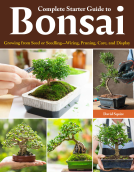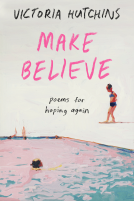
Urban Foraging
Find, Gather, and Cook 50 Wild Plants
by Lisa M. Rose
This title was previously available on NetGalley and is now archived.
Send NetGalley books directly to your Kindle or Kindle app
1
To read on a Kindle or Kindle app, please add kindle@netgalley.com as an approved email address to receive files in your Amazon account. Click here for step-by-step instructions.
2
Also find your Kindle email address within your Amazon account, and enter it here.
Pub Date Oct 11 2022 | Archive Date Oct 11 2022
Talking about this book? Use #UrbanForaging #NetGalley. More hashtag tips!
Description
In this stylish, scrumptious guide to wildcrafting in the city you’ll learn how to find, identify, harvest, and cook with 50 common wild plants, such as chickweed, dandelion, echinacea, honeysuckle, red clover, and pine. Urban Foraging, by expert forager Lisa M. Rose, shares all the basics necessary for successful foraging: clear photos that help identification during harvest, tips for ethical and safe gathering, details on culinary uses, and simple recipes will help you make truly fresh, nutritious meals.
Available Editions
| EDITION | Other Format |
| ISBN | 9781643260839 |
| PRICE | $20.00 (USD) |
| PAGES | 236 |
Featured Reviews
This was such a pleasant and quick read and I definitely will be purchasing a hard copy to take around with me here in the woods! The photos of the different plants were so beautiful and I loved the layout and the information given. This book gave me some great inspiration on some things for me to plant as well!
Thank you so much to NetGalley, Timber Press, and the author Lisa M. Rose
I love how neat and well-organized the presentation of this book is!
Love the cover. Love the real pictures and I get to know a lot more herbs and plants which can be used for culinary purposes.
The best part is most of these plants are familiar and I love the information about them given in this collection.
You will love this.
Thank you, Timber Press, for the advance review copy.
 Alyssa M, Reviewer
Alyssa M, Reviewer
I received a copy of this book through NetGalley in exchange for an honest review.
This is an interesting book about foraging. There are tips about what to look for and how to safely forage. The book lists common wild edible plants and has a few recipes to try them in. Some are definitely time intensive or hard to find, but there's a lot of interesting information.
It's a thorough book to look through.
What a clever and useful book!
Lisa M. Rose's Urban Foraging guides the reader through various forgeable plants, their uses, identifications and even a recipe or two for each. I will certainly be keeping this book in mind for future use as I have been itching to learn about foraging.
Clear photographs and descriptions of each plant are very useful and I appreciate the recommended reading at the end.
I have some exploring to do!
Thank you so much to NetGalley, Timber Press, and the author Lisa M. Rose for the opportunity to read this ARC in exchange for a review!
 Librarian 874554
Librarian 874554
Foraging is a fascinating hobby and this guide makes it accessible to people who live in urban areas as well. Check out this book to learn about the edible plants in your neighborhood!
 Reviewer 560742
Reviewer 560742
This is great and seems super helpful, planning on buying a physical copy of this for our garden this year. Lots of information.
With clear photos and descriptions of each plant listed within Urban Foraging I find that this book would be very useful to someone who is first jumping into the world of foraging. The included uses and recipes help elevate the learning experience and helps the newbie put their newly acquired knowledge into action.
I do think there needs to be a few more warnings of dangerous lookalikes - but overall I think the book is well written and will help many new foragers get excited for this new adventure.
Thank you so much to NetGalley and Timber Press for the opportunity to read this ARC in exchange for an honest review!
Now that we've left the city life and retired in the country, I'm learning a lot about what grows in our yard that's useful for food, medicinal, and other herbal uses. I let our yard grow out an extra month this year and found at least ten spring herbs that are growing in our yard. Learning about foraging has been very informative and that's why I was glad to be able to review this book.
The author discusses 50 common urban plants that can be foraged from most any place. In urban settings, most of these plants are considered weeds. We don't use that word anymore in our house because all those plants we were trying to kill in the metropolitan area we used to live in are really helpful plants with medicinal uses. The author does address issues like knowing what plants are and are not safe as well as knowing the history of the land where these plants are growing. She suggests a list of tools that one might want when foraging and plants to look for in different season.
Each plant is identified with a lovely color photograph, a description of what culinary uses the plant is used for, how to identify the plant, some considerations, and a recipe, in most cases. While I find the photos of the plants very appealing, I would have liked to have had some more details visible to be able to identify the plant with more certainty. When foraging, I would suggest having alternative identification apps or books so that you will have 100% certainty about the plants that you are harvesting.
Urban Foraging has a list of 50 plants to get you started on your way to foraging for plants in the your area and there are so many others that you can add when you're ready.
If you need inspiration in your foraging adventures, look no further! Bright pictures, key information and recipes invite you on foraging wherever you are. I liked the emphasis on being aware of how much you are picking and where you are foraging from. I do however wish there had been slightly more detailed descriptions of the plants, as well as information on any lookalikes, to help really clarify exactly what plant you are gathering, before you attempt eating it.
Thank you to NetGalley and the publisher for the advanced copy. All opinions are my own.
 Librarian 431790
Librarian 431790
An interesting and informative book if you want to learn about foraging. There's plenty of information and it can be an excellent started guide.
Recommended.
Many thanks to the publisher and Netgalley for this ARC, all opinions are mine
 Ashley G, Librarian
Ashley G, Librarian
I really enjoyed this book! I enjoy foraging and I love when people realize that a lot of the "weeds" in their yard can actually be used to make food, medicine, and cosmetics. A couple of notes: I didn't see a picture of goldenrod in the book; the author talks hyssop flowers but only shows the leaves, not the flowers; and she shows the pine needles but not the specific pine tips used in the recipes. I know it sounds nitpicky but foraging can be dangerous if you mess up identification, so the more pictures, the better. Other than that, an enjoyable book that's very useful!
Urban Foraging is a great introduction to gratifying foraging in our own city back yards and meadows. Author Lisa M. Rose details fifty common plants A to Z found in America including plant properties, beautiful photos, brief identification tips, medicinal and culinary uses and "things to consider". She also describes urban soil, foraging tools and sites to avoid (grey water, roadways, pesticide/insecticide spray).
As an experienced forager with a library of countless field guides, this would not be what I would take into the field but rather would use it for pleasure and to glean inspiration for recipes. Amongst those I would happily make include Autumn BBQ sauce, Savory Burdock Pickles, Roasted Daylily Blossoms Stuffed with Goat Cheese, Elderberry Syrup (I am always on the lookout for innovative ideas for syrups), Garlic Mustard Pesto and Nettle Risotto. Those plants without recipes often do have culinary suggestions such as using spruce tips. I can attest to their deliciousness in egg dishes, pickles, jelly and focaccia.
To properly identify plants one needs detailed photographs and drawings from various angles in situ to avoid possible errors. This is where this book does fall a bit short. However, it presents good basics to said urban plants we often take for granted (or even abhor) and their uses.
My sincere thank you to Timber Press and NetGalley for the privilege of reading this lovely book!
 Bookseller 887040
Bookseller 887040
So many plants around us are edible and free for the taking! I'm a bit wary of foraging because I don't want to poison myself, but many of these plats I already know and see often. Includes recipes
 Reviewer 530005
Reviewer 530005
There are many books like this but none like this. The book is detailed, aesthetically pleasing, and just fun to read. It is an invitation for people interested in foraging and ones who are new to it. I am buying a physical copy for all my walks. Thanks, Lisa!
 Jessica F, Reviewer
Jessica F, Reviewer
I am the daughter of a survivalist and I spent much of my childhood being trained on foraging in urban areas by my father. I can say truthfully that this book is a really great book for that sort of thing. I love the included photos and the recipes for each plant. I would have enjoyed more tips on how to properly process and store some of these plants but all in all this is a really informative book.
This is a really interesting book! I didn't realize how many forageable plants are in my own yard. The photos are much appreciated, as someone who doesn't always know what I'm looking at, as are the recipes. I find a lot of books and websites tell you what you can forage, but don't go much further into what you should do next. There is a good focus on safety, including ecological safety when it comes to environmental contamination, which I also appreciate especially as this book is targeted toward urban foragers and not necessarily someone picking plants from a cleaner area.
A fun and helpful addition to any outdoor enthusiast's bookshelf.
I love foraging books and this book, particularly about foraging plants in and around urban spaces is a lovely addition. Neat and precise. Useful for gardening and foraging enthusiasts or nature observers.
 Librarian 615579
Librarian 615579
What a beautiful book! The photographs found within this book are eye catching and informative. I thoroughly enjoyed the selection of forage-able plants found within this book, ranging from the common to the less so. You will find methods of using green tips from spruce trees to a medicinal use for plantain. This book will help reshape how you see the plants around you and spur on an interest to take a second look at the plants found throughout your day. A must add book to any nature enthusiast or novice's library!
Readers who liked this book also liked:
L.M. Montgomery, Crystal S. Chan, Kuma Chan
Children's Fiction, Comics, Graphic Novels, Manga, Teens & YA


















